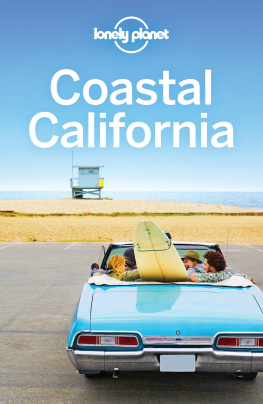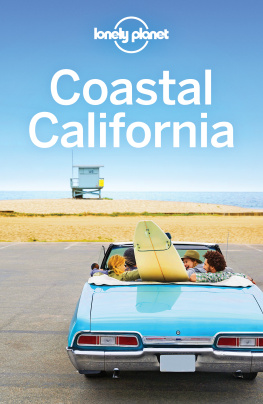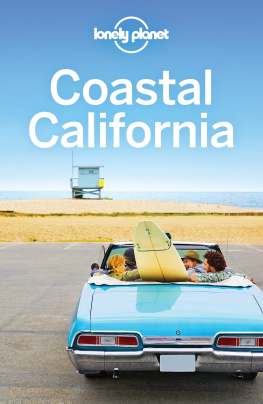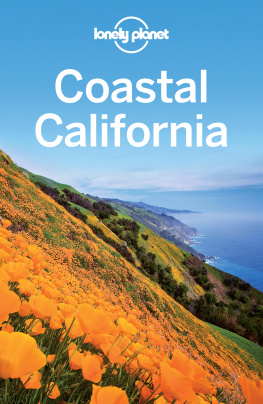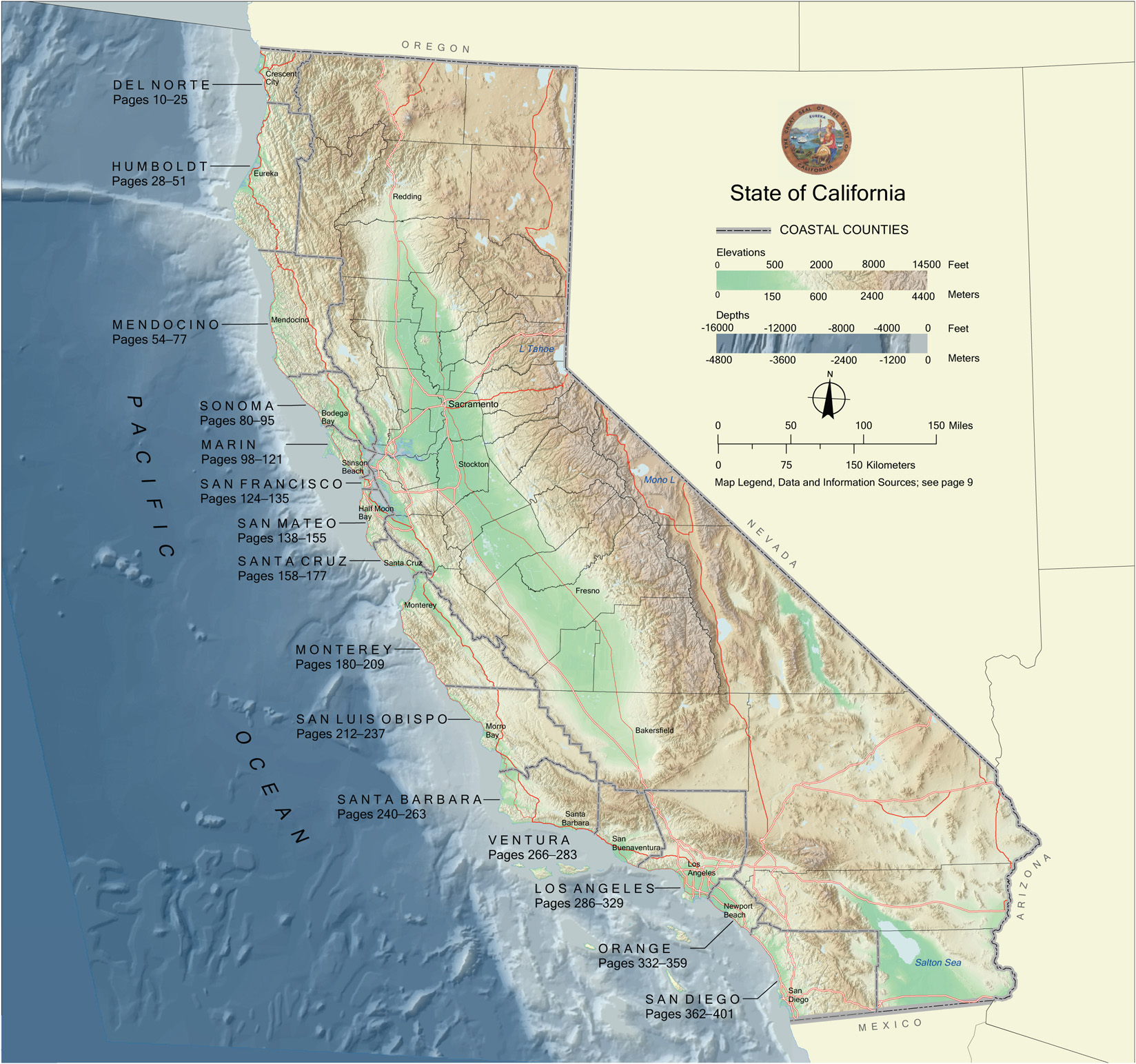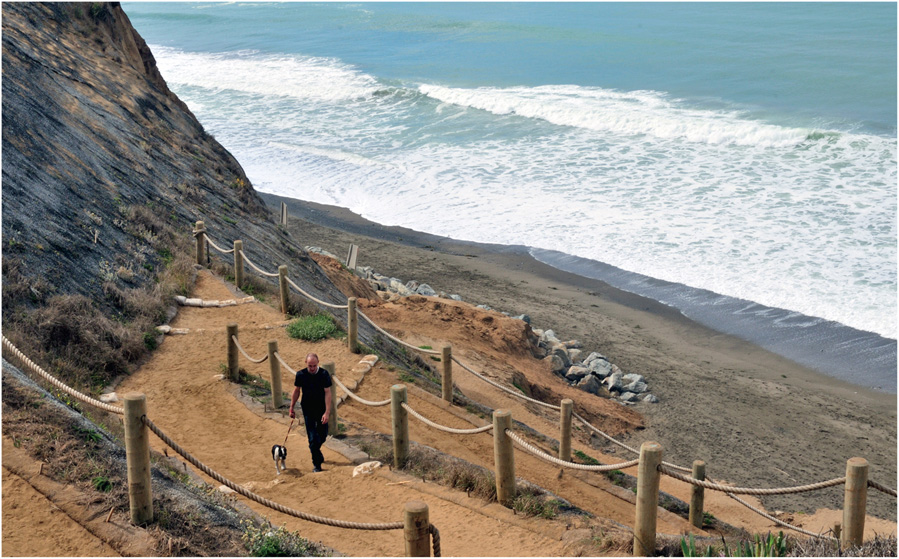
CALIFORNIA COASTAL ACCESS GUIDE
SEVENTH EDITION

Dedication
Dedicated to the memory of Peter M. Douglas ( 19422012 ), tireless champion of public coastal access, for his bold leadership in protecting Californias coast.
California Coastal Commission
C OMMISSIONERS
Steve Kinsey, Chair Jana Zimmer, Vice Chair
Dayna Bochco
Gregory Cox
Dr. Robert Garcia
Carole Groom
Erik Howell
Martha McClure
Wendy Mitchell
Mary K. Shallenberger
Effie Turnbull-Sanders
Mark Vargas
A LTERNATE C OMMISSIONERS
Terry Bowman
Olga Diaz
Jeff Ducios
Belinda Faustinos
Sarah Glade Gurney
Steve Kram
Maricela Morales
Randy Pestor
Dr. Paul Song
E X O FFICIO M EMBERS
John Laird / Janelle Beland
Jennifer Lucchesi / Cy Oggins
Brian P. Kelly / Dale Jones
February 2014
CALIFORNIA COASTAL ACCESS GUIDE
SEVENTH EDITION
S TATE OF C ALIFORNIA
Edmund G. Brown, Jr., Governor

C ALIFORNIA C OASTAL C OMMISSION
Charles Lester, Ph.D., J.D., Executive Director
Susan Hansch, Chief Deputy Director
Steve Scholl, Editor & Principal Writer
Erin Caughman, Designer & Co-Editor
Jonathan Van Coops, Mapping & GIS Program Manager
Gregory M. Benoit, Principal Cartographer
John Dixon, Ph.D., Staff Ecologist
Jonna Engel, Ph.D., Staff Ecologist
Lesley Ewing, P.E., Ph.D., Coastal Engineer
Mark Johnsson, Ph.D., Staff Geologist
Jo Ginsberg, Consulting Editor
Linda Locklin, Coastal Access Program Manager

UNIVERSITY OF CALIFORNIA PRESS
University of California Press, one of the most distinguished university presses in the United States, enriches lives around the world by advancing scholarship in the humanities, social sciences, and natural sciences. Its activities are supported by the UC Press Foundation and by philanthropic contributions from individuals and institutions. For more information, visit www.ucpress.edu.
University of California Press
Oakland, California
2014 by the State of California, California Coastal Commission.
All rights reserved.
No part of this book may be used or reproduced in any manner whatsoever without written permission except in the case of brief quotations embodied in articles and reviews. For information, write to the Executive Director, California Coastal Commission, 45 Fremont Street, Suite 2000, San Francisco, California 94105.
Library of Congress Cataloging-in-Publication Data
California coastal access guide / State of California, California Coastal
Commission.Seventh edition, revised.
pages cm
Steve Scholl, Editor & Principal Writer.
Includes bibliographical references and index.
ISBN 978-0-520-27817-2 (Paper : alk. paper)
ISBN 978-0-520-95935-4 (e-book)
1. Pacific Coast (Calif.)Guidebooks. 2. Recreation areasCaliforniaGuidebooks. 3. ParksCaliforniaGuidebooks. 4. CaliforniaGuidebooks. I. California Coastal Commission.
F868.P33C35 2014
917.94045309146dc23
2014008950
Printed in China.
19 18 17 16 15 14
10 9 8 7 6 5 4 3 2 1
The paper in this publication meets the minimum requirements of ANSI/NISO Z39.48-1992 (R 1997) (Permanence of Paper).
Cover image: Treasure Island Park and Beach, Orange County
Photograph: Steve Scholl
Contents
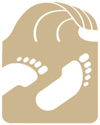
access n., liberty to approach
INTRODUCTION
Pacific Manor Beach, Pacifica, San Mateo County
The California Coastal Access Guide appeared in 1981. The first edition described 721 beaches, paths, and accessways along the states 1,271-mile-long coast. Preparation of the guide was carried out by the California Coastal Commission in response to the Legislatures direction to inventory and map all of the states public coastal accessways.
This seventh edition of the California Coastal Access Guide has been revised, reformatted, and updated. Included here are descriptions of more than 1,150 points at which the public can gain access to the coast of California. Along with beaches and access paths are interpretive centers, boating facilities, nature preserves, maritime museums, and other coast-related facilities that serve visitors.
Continuing their work to increase opportunities for legal, safe access to the shoreline are the California Coastal Commission, State Coastal Conservancy, San Francisco Bay Conservation and Development Commission, State Parks Department, local governments, and nonprofit land trusts. Each has a role to play in expanding opportunities for residents and visitors to enjoy and learn about Californias magnificent coast. This book is offered with the knowledge that a wide appreciation for the coast among Californians plays an important role in the protection of coastal resources.
More than a quarter of the California coastline, some 295 miles of shore, is encompassed within the state park system. Parks managed by federal, county, and city entities include many more miles of coast. The state of California owns all tidelands, submerged lands, and the beds of inland navigable waters, holding them for public trust uses that include fishing, navigation, commerce, nature preserves, swimming, boating, and walking. Tidelands consist of the area on a beach or rocky coastline that is between the mean high tide line and the mean low tide line. The California Constitution guarantees the publics right of access to tidelands. The state of California (or other managing agency), however, may place restrictions on the time, place, and manner of use of tidelands.
Private property exists along the California coast in many locations, inland of the tidelands. The public generally does not have a right to cross private property without permission to get to tidelands, although easements and deed restrictions allow public use of some private shoreline properties. When using tidelands, members of the public should exercise caution when there is a potential for encroaching on private land. Land owners similarly should be cautious in questioning the publics right to be on areas of the beach covered by public rights.
Keep in Mind
Additional information on public rights on certain beaches is available on the Access Program pages of the California Coastal Commissions website at www.coastal.ca.gov.
This guide describes selected activities that might enhance a visit to the coast, with emphasis on active pursuits, learning opportunities, and perhaps unexpected activities. Introductory pages in each county chapter describe additional activities that are well suited to that locale. Separating the chapters are feature that provide additional suggestions of things to do. Coastal access sites mentioned in the county introductions and in feature articles are marked in boldface type; consult the index to find more information on each site. Use the index also to search for lighthouses, boat launches, fishing piers, and sites for other activities.
Next page
![California Coastal Commission California Coastal Access Guide [Lingua Inglese]](/uploads/posts/book/157220/thumbs/california-coastal-commission-california-coastal.jpg)

